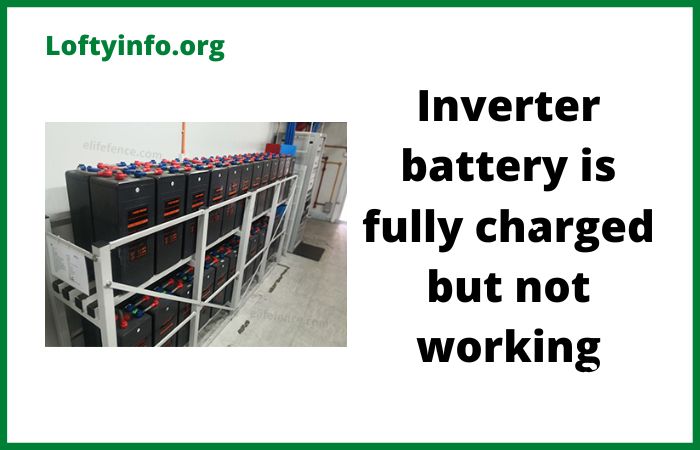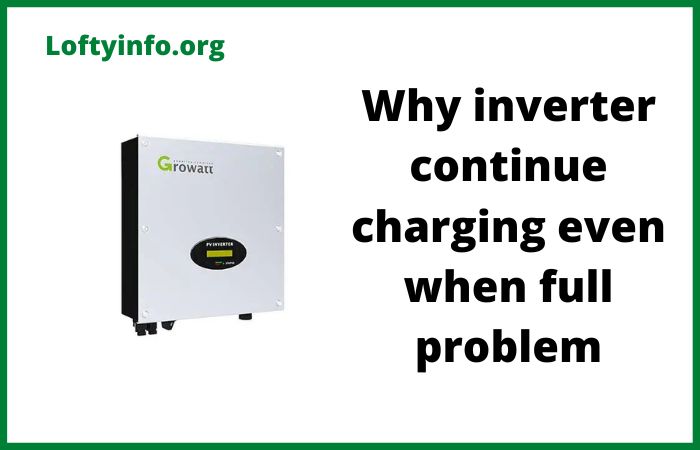Why Inverter Battery is Fully Charged But Not Working
Finding your home plunged into darkness despite having a fully charged inverter battery can be incredibly frustrating.
You check the battery indicator and it shows 100% charge but your appliances remain lifeless when the power cuts.
This common problem affects thousands of households and can stem from several underlying issues that have nothing to do with the battery’s charge level.
Understanding why a charged inverter battery fails to deliver power requires looking beyond the obvious. The charging status only tells part of the story.
A battery might hold electrical energy but still fail to supply it to your home due to connection problems, inverter malfunctions or protective mechanisms that prevent power flow.
This guide walks you through the exact reasons why your inverter refuses to work despite showing a full charge and provides practical solutions to get your backup power system running again.
Why Inverter Battery is Fully Charged But Not Working
1) Faulty Inverter Circuit Board
The inverter circuit board serves as the brain of your entire backup power system.
When this component develops faults the inverter cannot convert DC power from the battery into usable AC power for your home.
Circuit boards contain numerous electronic components including capacitors, transistors and integrated circuits that can fail due to heat, moisture or power surges.
A damaged circuit board often displays confusing symptoms.
The battery charges normally and shows full capacity but the inverter fails to switch on during power cuts.
You might notice the inverter’s display panel showing error codes or unusual readings.
In some cases the cooling fan runs but no power reaches your appliances.
Circuit board failures typically occur in inverters that are several years old or those exposed to extreme temperature fluctuations.
Diagnosing circuit board issues requires technical expertise.
Visual inspection might reveal burnt components, bulging capacitors or signs of moisture damage. However many circuit board faults remain invisible to the untrained eye.
Professional technicians use multimeters and oscilloscopes to test various board sections and identify failed components.
Repairing circuit boards involves replacing damaged parts with exact specifications to restore functionality.
2) Tripped or Malfunctioning Inverter MCB
The Miniature Circuit Breaker (MCB) in your inverter acts as a safety device that disconnects power flow when it detects overload or short circuit conditions.
A tripped MCB is one of the most overlooked reasons for inverter failure.
Even with a fully charged battery the inverter cannot supply power when its internal MCB remains in the off position.
MCBs trip for several legitimate reasons.
Connecting appliances that exceed the inverter’s rated capacity causes immediate tripping.
Short circuits in your home’s wiring can also trigger the MCB. Sometimes voltage fluctuations or sudden power surges make the MCB trip as a protective measure.
Once tripped the MCB stays off until manually reset.
Many people fail to check the MCB position and assume their inverter has stopped working.
Beyond simple tripping, MCBs can develop mechanical failures that prevent them from staying in the on position.
Internal components wear out over time especially in units that experience frequent tripping.
A faulty MCB might appear to be in the on position but fails to allow current flow.
Testing requires checking for continuity across the MCB terminals.
Replacing a worn-out MCB costs significantly less than replacing the entire inverter and immediately resolves power supply issues.
3) Loose or Corroded Battery Terminals
Battery terminals serve as the critical connection point between your battery and inverter.
Loose connections at these terminals create high resistance paths that prevent proper current flow.
Corrosion buildup on terminal surfaces acts as an insulator and blocks electrical conductivity.
Your battery meter might show full charge because the charging circuit connects differently but the main power output fails due to poor terminal contact.
Corrosion appears as a white, blue or greenish powder around battery terminals.
This occurs when battery acid fumes react with the metal terminals creating non-conductive compounds.
Loose connections develop when terminal bolts work themselves free due to vibration or thermal expansion and contraction cycles.
Even minimal looseness significantly impairs current flow especially under high load conditions.
Addressing terminal issues requires systematic cleaning and tightening.
Disconnect the battery cables and clean terminals using a wire brush and baking soda solution to neutralize acid.
Ensure terminal surfaces shine before reconnecting.
Apply petroleum jelly or terminal protection spray to prevent future corrosion.
Tighten terminal bolts firmly but avoid overtightening which can crack battery posts.
Proper terminal maintenance eliminates one of the most common yet easily fixable inverter problems.
4) Defective Internal Fuses
Inverters contain several internal fuses that protect different circuits from overcurrent damage.
When these fuses blow the inverter loses functionality even though the battery remains charged.
Fuses can blow due to power surges, short circuits or component failures within the inverter.
Unlike the main MCB, internal fuses often go unnoticed because they sit inside the inverter cabinet away from easy view.
Different fuses protect specific inverter functions.
One fuse might protect the charging circuit while another guards the output stage.
A blown output fuse allows the battery to charge normally but prevents power delivery to your home.
This creates the confusing situation where everything appears normal except no backup power flows during outages.
Fuse failures happen suddenly and completely unlike gradual component degradation.
Checking internal fuses requires opening the inverter cabinet and locating the fuse holders.
Visual inspection can identify blown fuses by checking for broken filaments inside glass fuses or discoloration in ceramic fuses.
However some fuse failures remain invisible requiring continuity testing with a multimeter.
Replacing blown fuses with exact amperage ratings restores functionality.
Using higher rated fuses seems tempting but removes necessary overcurrent protection and risks damaging expensive inverter components.
5) Faulty Inverter Relay
Relays function as electrically operated switches that control high power circuits using low power signals.
Your inverter uses relays to switch between mains power and battery power during outages.
A stuck or damaged relay prevents the inverter from switching to battery mode despite having adequate charge.
The relay might fail in the mains position leaving your home connected to dead utility lines rather than switching to battery backup.
Relay failures produce distinctive symptoms.
You might hear clicking sounds when power cuts occur indicating the relay attempts to switch but fails mechanically.
Sometimes relays stick in one position due to contact welding or mechanical jamming. Burnt relay contacts caused by arcing cannot conduct sufficient current and create high resistance paths.
Even when the inverter appears to switch on the faulty relay prevents adequate power delivery to your loads.
Testing relays requires measuring voltage and continuity on both sides of the relay contacts. When the inverter should be in battery mode but no voltage appears at the output the relay becomes the prime suspect.
Some relays can be manually activated to test functionality.
Professional diagnosis often involves temporarily bypassing the relay to confirm it as the problem source.
Relay replacement requires matching specifications including voltage rating, current capacity and coil voltage to ensure proper operation.
6) Battery Sulfation and Internal Damage
A battery showing full charge on the meter can still be internally damaged and unable to deliver power under load.
Sulfation occurs when lead sulfate crystals build up on battery plates reducing their ability to participate in chemical reactions.
Severely sulfated batteries accept charge and show correct voltage readings but cannot supply adequate current when demanded.
This phenomenon particularly affects batteries left in discharged states for extended periods.
Internal damage manifests in various forms.
Plate shedding causes active material to fall off battery plates reducing capacity.
Short circuits between plates caused by separator failure create dead cells.
Physical damage from excessive vibration or impact can crack plates and interrupt internal connections.
A battery with these problems might read correct voltage when not under load but fails to maintain voltage when current flows.
Testing battery health requires more than checking charge status. Load testing applies actual current draw and measures voltage drop.
A healthy battery maintains voltage near normal levels during load testing while damaged batteries show rapid voltage collapse.
Specific gravity measurements using a hydrometer reveal individual cell conditions in flooded batteries.
Professional battery testers provide comprehensive analysis including cold cranking amps and internal resistance.
When internal damage is confirmed battery replacement becomes necessary rather than attempting repairs to the inverter system.
Conclusion
A fully charged inverter battery that fails to provide backup power points to issues beyond simple charge depletion.
The six main causes covered here include circuit board failures, tripped MCBs, terminal problems, blown fuses, faulty relays and battery internal damage.
Each requires specific diagnostic approaches and solutions.
Regular maintenance including terminal cleaning, connection checks and professional inspections prevents many of these issues.
When problems occur systematic troubleshooting starting with simple checks like MCB position and terminal tightness often reveals the culprit.
Complex issues involving circuit boards and relays need qualified technician assistance.
Understanding these failure modes helps you communicate effectively with service providers and make informed decisions about repairs versus replacement.






